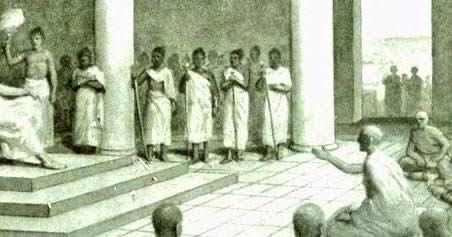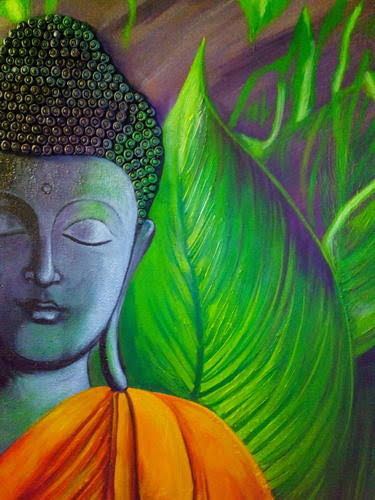The Chariot Simile of Milindprasna
Milindprasna is a work composed in Pali that purports to be the record of a dialogue between the Buddhist monk, Nagasena and the Greek King, Milinda. Milinda asks a series of questions highlighting what seem to be anomalies and contradictions in Buddhist doctrine, to each of which Nagasena gives clear, even ingenious answers. The effectiveness of these answers is enhanced by the numerous similes and analogies that are included within them. Although there is no doubt that the two protagonists of the Milindapanha really existed and that they held discussions with each other, it is not a verbatim record of the discussions as such but a work of literature.
Despite this, it may well have captured something of the personalities of the two men. Nagasena comes across as dignified but accessible, confident of his abilities to convince, intellectually alert, learned and witty. Milinda on the other hand, appears to be appears to be interested in Buddhism but by no means prepared to accept its tenets without good reasons. The Milindapanha is the most important book of Theravada Buddhist doctrine outside the Pali Tipitaka and is still widely studied.
The dialogue begins with King Milinda asking the sage his name. Nagasena replies, “ O king, I am known as Nàgasena but that is only a designation in common use, for no permanent individual can be found.” In other words, no permanent self exists!
Initially, Milinda disputes this and questions the sage on how merits and demerits for thoughts and actions can be attributed to an individual, were no self to exist and subsequently asks what it is then that the name Nagasena does denote. He then asks whether it is his body or parts of it, his sensations, his ideas or his consciousness that are denoted by ‘Nagasena’ to which the sage replies in the negative. The king responds by asking who it is then he sees before him.
Nagasena replies by way of an analogy with a chariot, beginning by asking the King (after having enquired as to how he had arrived at their meeting), ‘What is a chariot? Is it the wheels, the framework, the axle, the spokes of the wheel?’ The King argues that none of these things are the chariot but the aggregate of such physical parts composed in certain ways is conventionally understood as a chariot.
To this, Nagasena responds, ‘'Very good! Your Majesty has rightly grasped the meaning of "chariot." And just even so it is on account of all those things you questioned me about (the thirty-two kinds of organic matter in a human body, and the five constituent elements of being) that I come under the generally understood term, the designation in common use, of Nâgasena.”
Basically, by using the simile of the chariot, Nagasena articulated that just like we use the term chariot to denote the coming together of wheels, axel, horses, and reins, individual beings are without a permanent essence and are simply combinations of material and immaterial processes, subject to change at every moment. Hence they are designated a name for matters of convenience.
The chariot simile is often used to explain the idea of no-self (anatman) or no-soul in Buddhism. It is built on the idea of impermanence. Let’s explore this further in the following Thinkly.




